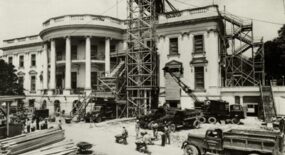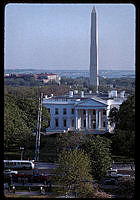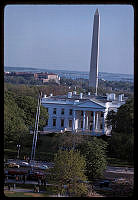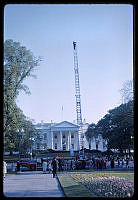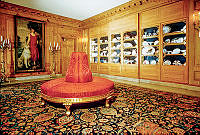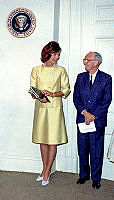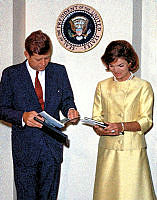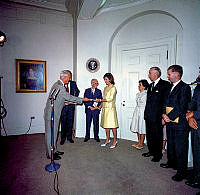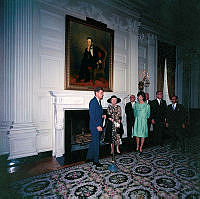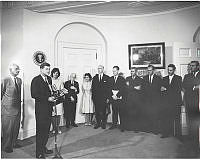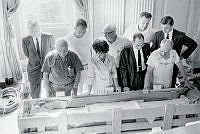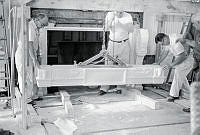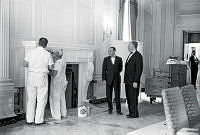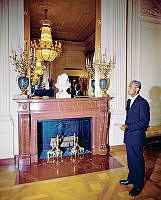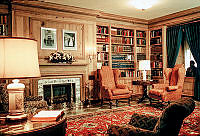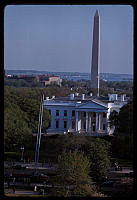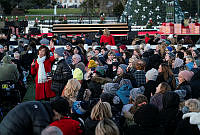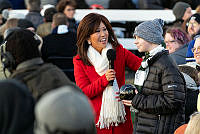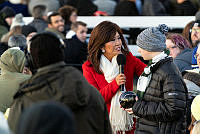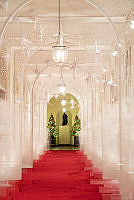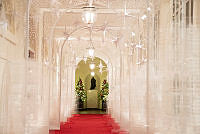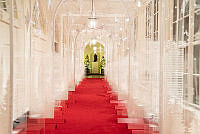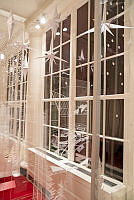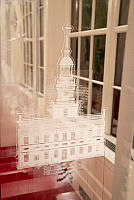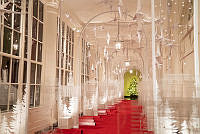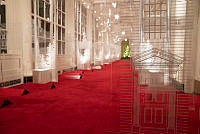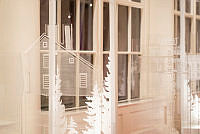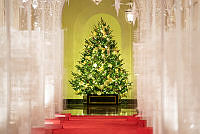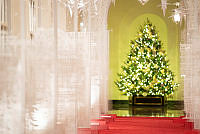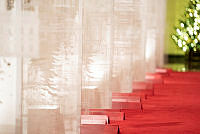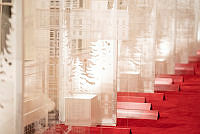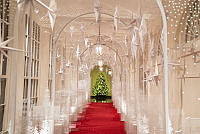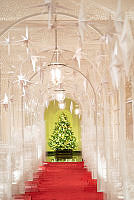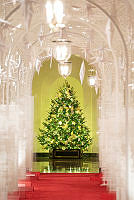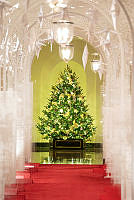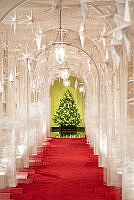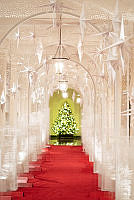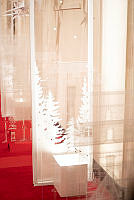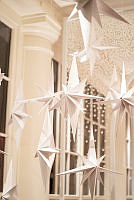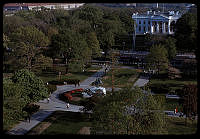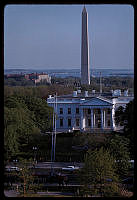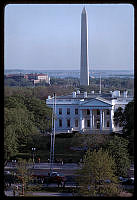Have you ever wondered...
Why is the Oval Office oval?
The Oval Office has been the main office for the president since President William Howard Taft began working in it in October 1909. After his inauguration, President Taft held a competition to select an architect to enlarge and make permanent the West Wing's "temporary" Executive office built during Theodore Roosevelt's administration. Taft ordered a southward extension of the existing structure. The winning architect was Nathan C. Wyeth of Washington, D.C. who designed the expansion and a new office for the President. Wyeth modeled the new president's office after the White House's most famous oval-shaped room—the Blue Room.
Before moving to the President's House in Philadelphia in late 1790, George Washington ordered that the straight rear walls of the house be rebuilt into a semi-circular form. These bowed walls may be the inspiration for the oval shape of the Blue Room, as the room on the first floor was considered the State Dining Room for President Washington. This distinctive shape apparently had been preferred by Washington to create a suitable space for a formal reception known as a "levee." Washington’s desire for an oval-shaped room may have also found its way into architect James Hoban’s winning design for the White House, selected in July 1792. A month earlier, the two men met at the President’s House in Philadelphia, and while there is no known documentation of their conversation, they most likely discussed architectural ideas and preferences, as well as the task at hand—building a new national capital on the Potomac River.
The levee, a tradition that evolved from the English court, was an occasion to allow men of prominence to meet the president. Replete with formal dress, silver buckles, and powdered hair, the event was a stiff public ceremony almost military-like in its starkness and sense of hierarchy. Invited guests entered the room and walked over to the president standing before the fireplace, bowing as a presidential aide made a low announcement of their names. The visitor then stepped back to his place. After fifteen minutes, the doors were closed and the group would have assembled in a semicircle. The president would then walk around the room, addressing each man by his name from memory with some pleasantry or studied remark of congratulation, which might have a political connotation. He bowed slightly, but never shook hands. When he had rounded the circle, the president returned to his place before the mantel and stood until, at a signal from an aide, the guests went to him, one by one, bowed without saying anything, and left the room.
Although the Oval Office was created out of the expansion of the "West Wing" in 1909, the room's distinctive shape was inspired by the Blue Room and its form may be traced to a formal social greeting that was meant by President Washington as a symbolic means of dramatizing the office of the Presidency.








